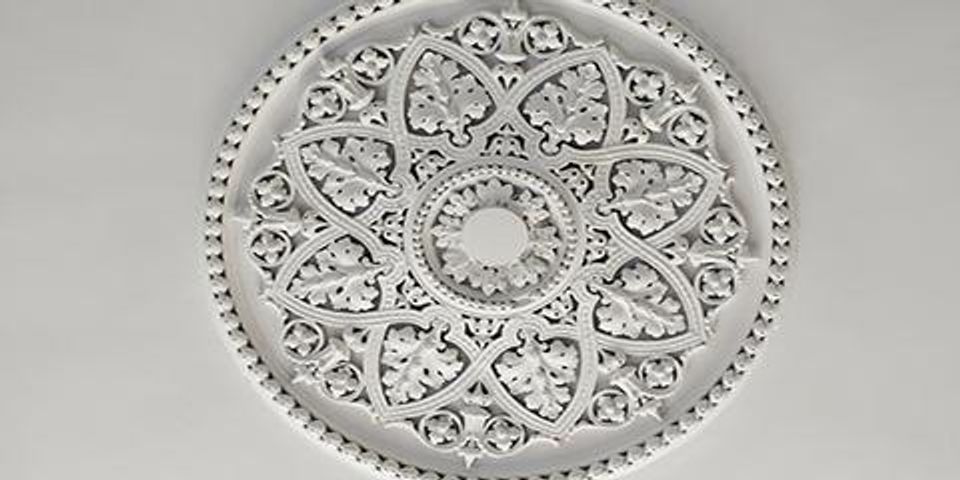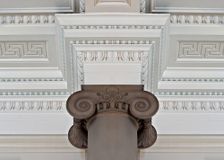
If you have historic ornamental plastering components on your property, you want to keep these elements in top shape to last as long as possible. Many of the details and designs of such plaster are intricate, beautiful, and unique, and knowing the correct plaster repair techniques to protect them is key. Here are a few tips for repairing iconic plaster areas.
How to Repair Ornamental Plaster
Ornamental Plastering Templates
The three most common ornamental plastering elements are cornices, coffered ceilings, and ceiling medallions. Each offers your architecture and décor an intricate, eye-catching detail, especially in historic buildings. Typically when these elements need extensive plaster repairs, they should be completed by a plaster restoration professional.
Cornices
 Cornices that have suffered damage and need sections replaced should have a cross-section profile taken. Typically a plaster repair expert will saw through the molding and create a sheet metal template for accurate details of the design. They can also take a rubber impression that can then be used to recast the plaster for the area. As new sections are created to replace damaged areas, the work is periodically checked against the original template to ensure a precise match.
Cornices that have suffered damage and need sections replaced should have a cross-section profile taken. Typically a plaster repair expert will saw through the molding and create a sheet metal template for accurate details of the design. They can also take a rubber impression that can then be used to recast the plaster for the area. As new sections are created to replace damaged areas, the work is periodically checked against the original template to ensure a precise match.
Coffered Ceilings
If you are dealing with a coffered ceiling, professionals must contend with a compromised structure that could cause collapse. Besides repairing the iconic look of the design, any areas that seem weakened should be inspected and stabilized first. Typically new channel iron is used as well as reinforced ties. After the area is secure, sections that need restoration are removed, molded, cast, and finally hung to match the remaining area.
Ceiling Medallions
While removing, molding, and recasting can fix damaged ceiling medallions, this type of ornamental plastering suffers from trouble that other types do not. Often, these decorative touches tend to be heavier but historically were not attached with extra bolts and screws for security. Typically going from above and carefully removing the medallion will keep the integrity intact and protect anything below.
If extensive damage has occurred, especially if there was once a light fixture present, sections of the remaining medallion can be used to recast and match any missing pieces. Additionally, if the ceiling shows signs of a missing medallion, usually by an imprint called ghosting on the area, a cast from the existing one can be made to craft a new one and restore historical accuracy.
Plastering by Eric Aulbach brings more than three decades of experience to every plaster repair project including services for stucco and ornamental plastering for the Saint Louis area. Residential and commercial buildings can be restored to their former beauty with his professional approach and meticulous craftsmanship. Call (314) 479-1402 or visit his website for more information.
About the Business
Have a question? Ask the experts!
Send your question

